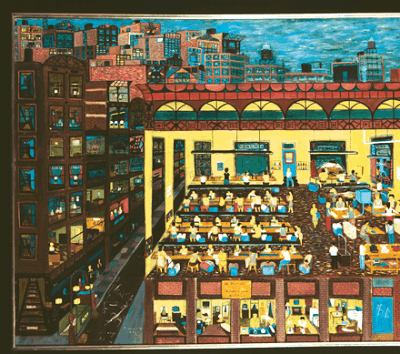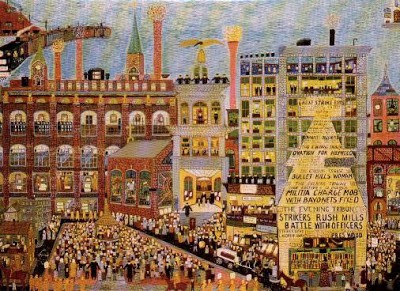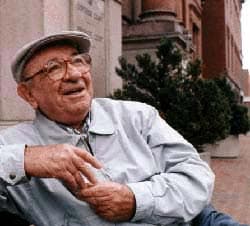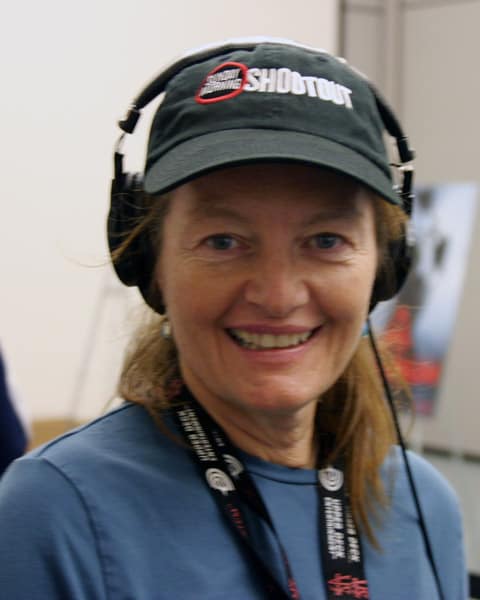Ralph Fasanella, American Socialist Artist
I have long admired the paintings of Ralph Fasanella (1914 – 1997). He is known as the artist of the working man. And so, how fitting that he was born on Labor Day. A print of his painting, “The Great Strike, Lawrence – 1912” hangs above my desk. It portrays the textile strike of 1912 in which thousands of people from numerous ethnic backgrounds came together and participated in a strike, picketing in Lawrence, Massachusetts.
Let the Union Roll
These early skirmishes between workers and company officials really set the stage for the way we go about business today.
We would not think of putting our seven-year-old children to work. And we would not work over 40 hours in a work week without earning additional compensation for it. These are just a couple of hard-won benefits that early union organizers and members won with their blood, sweat and tears.
A Working Man
Ralph Fasanella used to describe himself as “a working man with social ideas.” According to Wikipedia, “The son of Italian immigrants, Fasanella spent much of his youth delivering ice with his father from a horse-driven wagon. This experience deeply impressed him. He saw his father as representative of all working men, beaten down day after day and struggling for survival.
“Fasanella later said that the compositional density of his pictures was influenced by the experience of helping his father deliver ice. This involved removing all the food from customers’ refrigerators and arranging it in neatly ordered stacks.
 His Many Occupations
His Many Occupations
As a young man he went to Spain to fight with the Abraham Lincoln Brigade. He then later worked as a union organizer, a trucker and a garment factory worker. When he was blacklisted for many years, he found employment in his brothers’ gas station.
Then, in the early 1970s, his vibrant paintings of the urban landscape earned recognition for their brilliant evocation of working class life and culture. He was finally able to make a living from his art. In this painting, “Dress Shop,” which shows the cut-away interior of a garment factory, Fasanella depicts his mother and sister, who were both seamstresses.
Finding Passion in Painting
The artist said that he was joyful as he worked on this painting: “I felt wonderful. It’s a beautiful painting, very rich. That came because, knowing the people in the shop and including my sister-I loved these people. They were a part of me.” (From Paul S. D’Ambrosio, Ralph Fasanella’s America. Cooperstown, NY: New York State Historical Association; 2001.)
So if you ever get a chance to view any of Fasanella’s work, do it. Study it. He was an American original.



